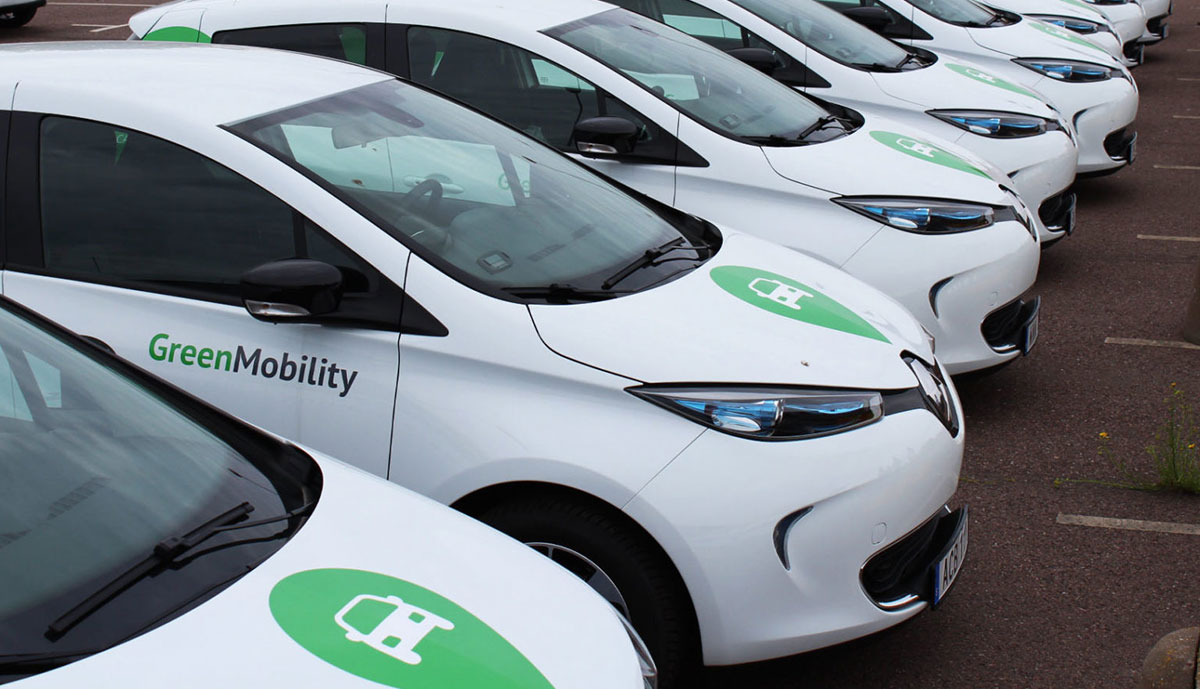Automotive Sector : Changing landscape towards “Green Mobility” in the automotive sector

Marketing Division Head Office | Indian Oil Corporation Limited | Mumbai
With the ever-burgeoning vehicle population, rising need for fossil fuels, and inadequate infrastructure leading to heavy traffic snarls, the need for reshaping mobility is gaining importance. The discussion on Net Zero emissions through a model framework is crucial when the ecosystem for the same is yet to be developed in full.
The automotive sector has seen a massive transformation in the last 10 years which is far beyond what has happened in the last five decades. The trends are evolving, and companies are adapting fast to these disruptions to exceed customer expectations with a renewed focus on materials and technology.
India has made great strides imbibing all kinds of possible technological innovations creating a framework for sustainability in mobility. The following will shape the mobility landscape in the short to medium term in our country.
- Green Alternate Fuels
- Advanced Materials E-Mobility
Green Alternate Fuels- What the Future Holds
With a focus on ‘Flexi-fuels’, the name “Etholine Engines” is not far off. As blended fuels accelerate mobility towards a greener future, they also add a plethora of challenges to the automobile industry. While ethanol-imbibed fuels give automakers the advantage to work with a higher compression ratio, it also makes it necessary to modify the materials and the core of the engine itself to adapt to the corrosive nature of the fuel. Similarly, Ethanol’s affinity to water from the atmosphere and its lower calorific content needs to be tackled for getting efficient results. The desired fuel economy needs to be achieved through the right percentage blend of Ethanol, as well as the engine modifications fine-tuned to the ratio of the blended fuel.
At IndianOil, we have created various blended fuels such as Ethanol Blended Gasoline (E20), Methanol Blended Gasoline (M15), and Hydrogen enriched CNG (H-CNG). Compressed Biogas (CBG) has already been introduced at various locations across India under the novel SATAT Scheme launched by Govt. of India. The Methanol Blended Gasoline(M15) was rolled out during FY 2022 on a pilot basis for validation & testing for various OEMs. XtraGreen Diesel (Higher cetane number) and XP 100 (RON 100) gasoline were launched in 2021 which helps in better combustion efficiency and maintains engine cleanliness giving both qualitative and quantitative benefits to the end consumers. The recent launch of reference fuels for Auto OEMs is a proactive step in establishing the ideal collaboration partner in the Indian automotive sector.
Advanced Materials
The major challenges the automotive industry currently faces in improving fuel efficiency are high acceleration demands and reduced rolling resistance. So far, “Lightweighting” was seen as the only viable option to compensate for the energy loss and improvement in emissions. Lightweighting can be done via; Material, Design, CAE, and manufacturing leading to structural efficiency and basic weight reduction which will further contribute to reduced environmental impact. Though the drivers for “lightweighting” started decades ago, the same needs to be revisited in view of the CAFÉ 2 Norms, EV range anxiety, and the sustainability initiatives put forth by environmental and regulatory bodies.
E-Mobility – The Game Changer
E-mobility or electrification is perhaps the biggest disruptor in the automotive industry in recent years. The role of electric vehicles in a world that moves towards sustainability and a planet-positive attitude is immense. In the race to achieve e-mobility, automotive manufacturers face several hurdles in managing vehicle weight, limited charging infrastructure, effective battery chemistry, and addressing the range anxiety of customers. The prevalent Li-based battery chemistry and transmission system requires distinctive lubricant technology, especially if the motor is immersed in fluids along with transmission in the console.
One of the key roadblocks in the fast adoption of e-mobility is the lack of self-sufficiency in Lithium, making the import dependency of it at par with crude oil. Though the recent findings in J&K offer a ray of hope, the feasibility of accessing the same in the near future for the benefit of the industry needs to be ascertained. IndianOil has been pivotal in meeting the needs of the country and was entrusted to find alternate chemistry with materials prevalent in the country. The “AL- Air” battery chemistry in collaboration with M/s Phinergy is already under validation at some of the major Auto OEMs in India. Through its cutting-edge R&D, we have been able to offer E-fluids too to various OEMs and newer versions are under different stages of testing.
EPR – Being Responsible for the Future
In addition to the above three parameters, the lubricant industry is also going for Extender Producer Responsibility (EPR) in the year 2025 with the latest draft bill introduced.
IndianOil has always been a pioneer in its industry and already has four products under the portfolio of “Green Products” even before the EPR on Lubricants discussion started. The four products were launched in the year 2022 in Passenger cars (Servo Greenmile), Commercial Vehicles (Servo Raftaar), Two-Wheelers (Servo 4T Green), and Tractors (Servo Tractor Green).
IndianOil takes sustainability at the core of decision-making and has enthused all its initiatives to drive towards “Net Zero” on operational efficiency by 2046 thereby sustainably reenergizing India.
(Shilpa Bichitra | Anniversary Edition | 2025)
Categories
-
Agriculture & Rural Development11
-
Banking & Insurance4
-
Coal & Mines5
-
Defence & Defence Production5
-
Engineering & Technology3
-
Environment & Pollution1
-
Export & Import1
-
Housing & Urban Development1
-
Human Resources & CSR Initiatives2
-
Iron & Steel3
-
Logistic & Warehousing2
-
Micro, Small & Medium Enterprise3
-
Petroleum & Natural Gas6
-
Post & Telecommunication2
-
Power & Energy3
-
Tourism & Leisure2

